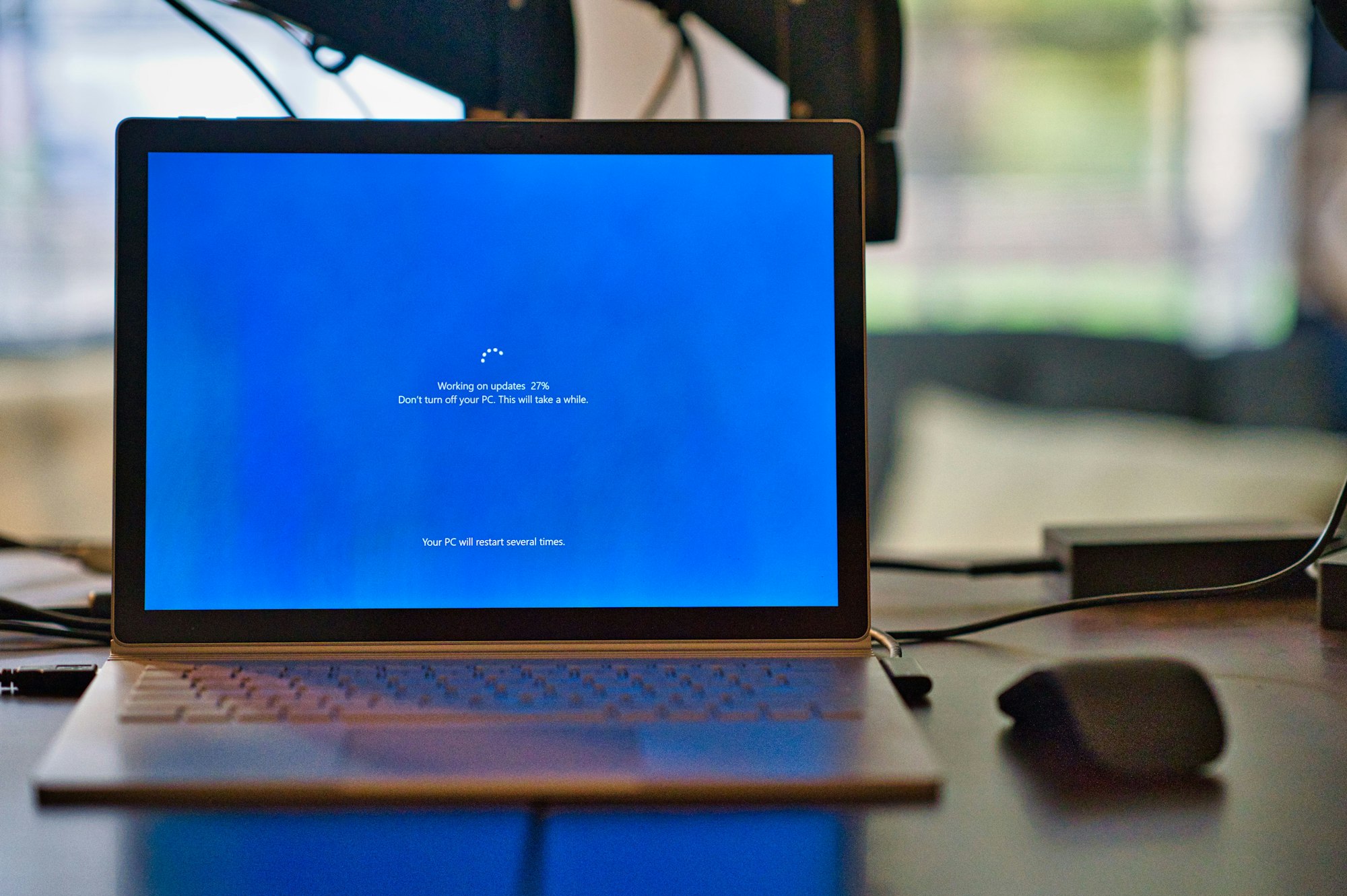Brave Browser Blocks Windows Recall: A Deep Dive Into Privacy Protection

Executive Summary
Brave Software has implemented automatic protection against Microsoft's controversial Windows Recall feature, making it the first major browser to proactively block the AI-powered screenshot system by default. This move represents a significant stance in the ongoing privacy debate surrounding Microsoft's data collection practices and highlights the growing tension between productivity features and user privacy.

Understanding Microsoft Windows Recall
What Is Windows Recall?
Windows Recall is Microsoft's AI-powered "photographic memory" feature introduced for Windows 11 Copilot+ PCs. The system operates by:
- Continuous Screenshot Capture: Taking screenshots of active windows every 3-5 seconds
- AI Analysis: Using on-device Neural Processing Units (NPUs) to analyze screenshot content
- Semantic Indexing: Creating searchable databases of text, images, and activities
- Natural Language Search: Enabling users to find past activities using plain language queries
The feature is designed to help users quickly retrieve information from past computing sessions, theoretically improving productivity by creating a searchable timeline of all screen activity.
Technical Architecture
Recall's implementation involves several key components:
Storage System:
- Uses up to 25GB of local storage by default (expandable to 150GB+)
- Stores screenshots for up to 3 months
- Creates encrypted databases protected by Windows Hello Enhanced Sign-in Security (ESS)
- Utilizes Virtualization-based Security Enclaves (VBS) for data protection
AI Processing:
- Runs entirely on-device using NPU acceleration
- Extracts text, identifies objects, and categorizes content
- Creates semantic indices for fast searching
- No cloud connectivity required for core functionality
Security Features (Added After Initial Criticism):
- Opt-in activation rather than default enablement
- Windows Hello biometric authentication required
- Sensitive content filtering for passwords, credit cards, and personal data
- Per-app and per-website exclusion capabilities

Privacy and Security Concerns
Despite Microsoft's security enhancements, Recall continues to face significant criticism:
Data Exposure Risks:
- Creates comprehensive logs of all user activity, including "disappearing" messages
- Stores sensitive information like passwords, financial data, and personal communications
- Potential for data extraction by malware or unauthorized users
- Creates attractive targets for cybercriminals and nation-state actors
Trust and Control Issues:
- Cannot be completely uninstalled, only disabled
- Requires "extraordinary level of trust" in Microsoft's data handling
- Future policy changes could alter how data is used
- Potential for feature creep expanding data collection over time
Enterprise and Personal Impact:
- Raises compliance concerns for businesses handling sensitive data
- Creates risks in domestic violence situations where monitoring could be exploited
- Challenges traditional expectations of digital privacy
- May violate organizational data protection policies
Brave's Technical Solution
Implementation Details
Brave has implemented a comprehensive blocking system using Microsoft's own APIs:
SetInputScope API Usage:
- Utilizes Microsoft's official
SetInputScopeAPI - Sets input scope to
IS_PRIVATEfor all browser windows - Instructs Windows that Brave content should not be captured
- Works at the system level to prevent screenshot capture
Technical Implementation:
// Brave's approach in renderer_widget_host_view
SetInputScope(window_handle, IS_PRIVATE);
This tells Windows to treat every Brave tab as if it were in private browsing mode, preventing Recall from capturing any browser content.
Deployment and Availability
Current Status:
- Already live in Brave Nightly builds
- Rolling out to stable releases in coming weeks
- Available as default protection for all users
- Includes user option to disable protection if desired
User Control:
- Settings accessible via
brave://settings/privacy - Toggle available: "Block Microsoft Recall"
- Default setting: Enabled (protection active)
- Users can opt-in to allow Recall if preferred

Comparison with Other Solutions
Signal's Approach:
- Uses DRM management flags to prevent screenshots
- More aggressive but can interfere with accessibility software
- Requires trade-offs with screen readers and similar tools
- Effective but potentially problematic for some users
Brave's Advantages:
- Uses official Microsoft APIs
- No interference with accessibility features
- Seamless operation without performance impact
- First major browser to implement default protection
Industry Implications
Browser Competition and Privacy Standards
Brave's proactive stance sets new expectations for privacy-focused browsers:
- Market Differentiation: Privacy features become competitive advantages
- User Education: Raises awareness of data collection practices
- Industry Pressure: May influence other browsers to implement similar protections
- Default Privacy: Shifts from opt-in to privacy-by-default approaches
Microsoft's Response Strategy
Microsoft faces increasing pushback from software developers:
- API Provision: Provides official methods for software to opt out
- Security Enhancements: Continues improving Recall's security architecture
- Enterprise Considerations: Must balance productivity features with corporate privacy needs
- Regulatory Scrutiny: Faces potential challenges from privacy regulators
Broader Privacy Ecosystem
This development reflects larger trends in digital privacy:
User Awareness: Growing understanding of data collection practices Developer Responsibility: Software companies taking proactive privacy stances Platform Tensions: Conflicts between OS vendors and application developers Regulatory Environment: Increasing privacy legislation influencing product design

Technical Analysis: Effectiveness and Limitations
Strengths of Brave's Approach
Comprehensive Protection:
- Blocks all browser windows, not just private browsing
- Uses official Microsoft APIs for maximum compatibility
- Automatic protection without user configuration required
- Maintains full browser functionality
User Control:
- Provides opt-out mechanism for users who want Recall
- Clear settings interface for privacy management
- Transparent about protection mechanisms
- Balances privacy with user choice
Potential Limitations
Scope Restrictions:
- Only protects Brave browser windows
- Doesn't prevent Recall from capturing other applications
- Users may need multiple privacy tools for comprehensive protection
- Other browsers remain vulnerable unless they implement similar measures
Future Compatibility:
- Relies on Microsoft maintaining API compatibility
- Potential for Microsoft to modify or restrict blocking mechanisms
- May require ongoing updates to maintain effectiveness
- Could face technical challenges with Windows updates
Recommendations for Users
For Privacy-Conscious Users
Immediate Actions:
- Switch to Brave: Consider migrating to Brave browser for automatic Recall protection
- Update Regularly: Ensure latest browser versions with enhanced privacy features
- Verify Settings: Check privacy settings to confirm Recall blocking is enabled
- Audit Other Apps: Evaluate other applications for similar privacy protections
Comprehensive Privacy Strategy:
- Use privacy-focused browsers like Brave as default
- Implement system-wide privacy tools and VPNs
- Regularly review and adjust privacy settings across all applications
- Stay informed about emerging privacy threats and protection methods
For Enterprise Users
Policy Considerations:
- Evaluate Windows Recall deployment in corporate environments
- Implement browser policies requiring privacy-protective browsers
- Conduct privacy impact assessments for AI-powered features
- Develop incident response plans for potential data exposure
Technical Implementation:
- Deploy Brave browser with default privacy settings across organization
- Configure group policies to prevent users from disabling privacy protections
- Monitor for new privacy-protective tools and evaluate for deployment
- Maintain updated inventory of applications with Recall blocking capabilities
Future Outlook
Short-term Developments
Industry Response: Expect other privacy-focused browsers to implement similar protections Microsoft Adjustments: Likely continued refinement of Recall security and privacy features User Adoption: Increased migration to browsers offering proactive privacy protection Enterprise Policies: Organizations developing specific guidelines for AI-powered OS features
Long-term Implications
Privacy Arms Race: Ongoing tension between data collection and privacy protection Regulatory Evolution: Potential new legislation addressing AI-powered data collection Technical Standards: Industry-wide standards for privacy-protective software design User Expectations: Growing demand for privacy-by-default in all software
Conclusion
Brave's decision to block Windows Recall by default represents more than a technical implementation—it signals a fundamental shift toward proactive privacy protection in software design. By leveraging Microsoft's own APIs to prevent data collection, Brave demonstrates that privacy and functionality can coexist without user intervention.
The controversy surrounding Windows Recall highlights the broader challenges facing the technology industry as AI capabilities expand. While features like Recall offer genuine productivity benefits, they also create unprecedented opportunities for data exposure and privacy violations.
For users concerned about digital privacy, Brave's automatic protection provides immediate security against one of the most invasive data collection mechanisms ever built into a consumer operating system. However, comprehensive privacy protection requires vigilance across all applications and platforms, not just web browsers.
As this privacy landscape continues evolving, the actions of companies like Brave may well determine whether user privacy becomes a competitive differentiator or an industry-wide standard. The technical success of Brave's implementation proves that protecting user privacy doesn't require sacrificing functionality—it simply requires prioritizing privacy in design decisions from the ground up.









